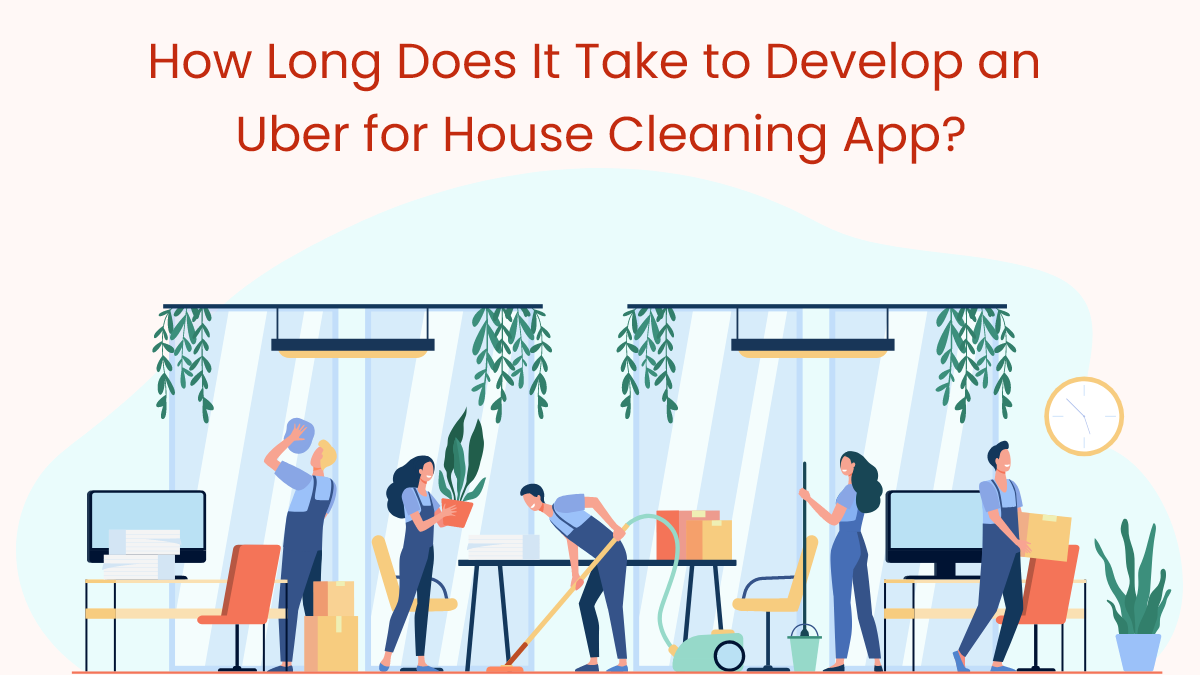How Long Does It Take to Develop an Uber for House Cleaning App?

Creating an Uber for house cleaning app involves a multi-step process that requires careful planning, development, testing, and deployment. The timeline for developing such an app can vary depending on various factors, including the complexity of features, platform compatibility, design requirements, and integration of third-party services. Here's a breakdown of the typical timeline for developing an Uber for house cleaning app:
1. Discovery and Planning
The initial phase of app development involves gathering requirements, conducting market research, and defining the scope of the project. During this stage, the development team works closely with stakeholders to identify key features, target audience, platform compatibility (iOS, Android, or both), and development timeline. A detailed project plan and timeline are created based on the gathered requirements and project objectives.
2. Design
The design phase focuses on creating wireframes, prototypes, and user interface (UI) designs for the house cleaning app. Designers collaborate with stakeholders to create a visually appealing and intuitive interface that enhances the user experience. The design process includes creating mockups, defining color schemes, typography, and branding elements, as well as ensuring compatibility with different screen sizes and resolutions.
3. Development
The development phase involves coding and building the frontend and backend infrastructure of the house cleaning app. Developers use mobile application development frameworks (e.g., React Native, Flutter) to create the frontend interface and implement features such as user registration, booking management, payment processing, and communication between users and service providers. Backend developers build the server-side logic, database, APIs, and integration with third-party services (e.g., payment gateways, mapping services).
4. Testing and Quality Assurance
Once the app is developed, it undergoes rigorous testing and quality assurance to identify and rectify any bugs, errors, or usability issues. Quality assurance engineers perform various types of testing, including functional testing, usability testing, performance testing, and security testing, to ensure that the app meets quality standards and performs as expected across different devices and operating systems. Feedback from beta testers is collected and incorporated into the app to improve user experience and address any issues before launch.
5. Deployment and Launch
After thorough testing and refinement, the house cleaning app is ready for deployment and launch. The deployment process involves preparing the app for release on the respective app stores (Apple App Store, Google Play Store) and submitting it for review and approval. Once approved, the app is published and made available for download to users. The launch phase also includes marketing and promotion efforts to raise awareness and attract users to the app.
6. Post-Launch Optimization and Updates
After the app is launched, the development team continues to monitor its performance, gather user feedback, and make iterative improvements based on user behavior and market trends. Regular updates and enhancements are released to add new features, fix bugs, optimize performance, and address any emerging issues. Post-launch optimization is an ongoing process aimed at ensuring the long-term success and sustainability of the house cleaning app.
Conclusion
In conclusion, the timeline for developing an Uber for house cleaning app typically ranges from 6 to 12 months, depending on various factors such as project complexity, team size, and development approach. By following a structured development process and prioritizing quality, usability, and user feedback, developers can create a successful and user-friendly app that meets the needs of modern consumers and service providers alike.
- Questions and Answers
- Opinion
- Story/Motivational/Inspiring
- Technology
- Art
- Causes
- Crafts
- Dance
- Drinks
- Film/Movie
- Fitness
- Food
- Games
- Gardening
- Health
- Home
- Literature
- Music
- Networking
- Other
- Party
- Religion
- Shopping
- Sports
- Theater
- Wellness
- News
- Culture
- War machines and policy

